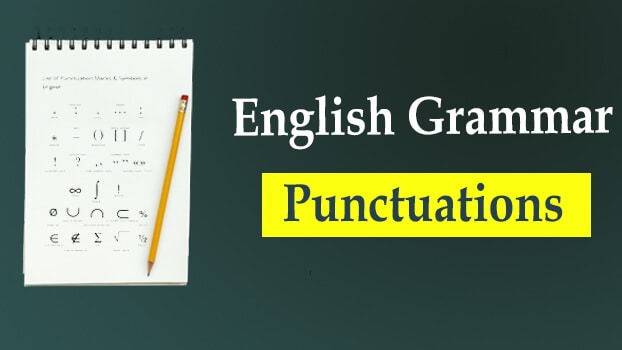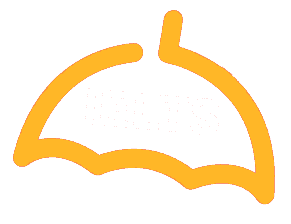IELTS Writing test is scored on the basis of Grammar, Spelling, Vocabulary, Coherence, Sentential range, Organization and Punctuation.
No matter how it seems in size and importance, quite a lot of marks are lost for the lack of correct or inappropriate punctuation marks.
In this article, let us look at the IELTS Punctuations Rules for grammar, and get rid of some misnomers surrounding it.
Let us discuss IELTS punctuation marks one at a time, depending on their order of importance.

IELTS Punctuations Rules
1. Full Stop (UK English)/ Period (American English)
One Of The Most Important Punctuation Rules In Ielts Is Full Stop, Otherwise Known As Period In US English Is A Symbol (.) Which Is Used
A) To End Sentences.
For example,
Sally woke up early and made a tea for herself.
Rama killed Ravana.
I am having a bad day today.
B) For Abbreviations. Whenever A Shortened Form Of A Word Is Written In English, It Needs To Be Followed By A Full Stop.
For example,
Dr. Watson is the best surgeon in the city.
Cheese, butter, etc. are used to fry vegetables.
Rev. D. Patrick has retired.
2. Comma
In ielts punctuation rules, Comma is Symbolized by (,).A comma is used in various contexts like
A) Separating Clauses.
For example,
Unlike the other day, the sun is shining today.
The girl, who was seen crying for her parents, has reunited with them.
After a rigorous week, she decided to take the weekend off.
B) After Sentence Initial Adverbs
Occasionally, she would drink a few pegs of alcohol.
Usually, it’s a busy street.
Adverbs in English have specific positions that they can occupy in a sentence. The possible adverbial positions are:
- The dog ran very quickly.
In the above sentence, the adverb ‘quickly’ appears after the verb.
- I need to submit the project by evening today.
In the above sentence, the adverb ‘today’ appears in the end of the sentence.
(c) Usually, we have an early dinner.
In the above sentence, the adverb ‘usually’ appears in the beginning of the sentence.
It is important to note that whenever an adverb appears at the beginning of a sentence, it should be followed by a comma (,). For example,
- Occasionally, she would drink a few pegs of alcohol.
- Suddenly, he ran out of the room and went towards the backyard.
- Cautiously, the door lock was broken.
C) When Listing More Than Two Things In A Sentence.
In a sentence, we often list things in a line, like ‘apples, bananas, mangoes, etc.’ In order to draw a boundary or compartmentalize the items of the list, a comma is used after each item. For example,
- I need sprouts, sausages, eggs and coffee for breakfast.In certain occasions, we use more than one word to describe the subject or the object. In such cases, the adjectives describing the subject (noun) are separated by commas. For example,
- The quick, brown fox jumped over the wall.
- The country needs social, political, financial and environmental reform.
- I bought a variety of pens, charts, pins and other stationery items from the supermarket.
For example,
I need sprouts, sausages, eggs and coffee for breakfast.
The country needs social, political, financial and environmental reform.
D) When Using Multiple Adjectives To Modify A Noun.
For example,
The quick, brown fox jumped over the wall.
It was a bright, sunny day.
E) While Using Numbers More Than 3 Digits.
1,000
For example, 3,98,764
As a part of the numerical unit system, commas, while counted from the left most unit, appears after the third position like 1,000 and then on after every third unit in the American system, like 1,000,000,000 or after every two units in the Indian system. For example, 1,00,00,000.
F) While Quoting Someone, Use A Comma Before The Quotation Marks.
For example,
He asked anxiously, “Aren’t we getting late?”
The butcher exclaimed, “This is too much workload”
Snape replied, “Always.”
G) Always Use A Comma And A Conjunction When Joining Two Independent Clauses.
It was raining, but I reached on time.
Can you come, or should I go on my own?
I will travel, provided an allowance is allotted for it.
For example,
Can you come, or should I go?
H) While Adding Adjuncts. Adjuncts Are Optional Additional Information And Are To Be Preceded And Followed By Commas.
For example,
Ramesh, who is a good painter, is coming to town today.
My friend, whom I last met 10 years, is going to get married.
The princess, oblivious of pain, lived happily ever after.
I) While Writing An Address
54/1, Baker’s Street
202, Green House, Ameerpet
101, 5th Main, 6th Cross
3. Apostrophe
Although the prescriptive grammar books gives you 14 rules in terms of using the apostrophe, it is one of the most simple IELTS punctuation rules to use. Symbolized with (‘), the apostrophe is used in the following situations:
A) To Show Ownership Or Possession.
For example,
This is Sam’s car.
I am wearing my mother’s watch.
I envy senators’ lives.
Note: To show possession, use the apostrophe after the word if the word ends with s (singular or plural) and use and ‘s in case it ends with any other letter. That is one simple rule covering 4 different rules that you learnt in school.
B) Contractions. Whenever You Want To Eliminate A Letter From Informal Written English, Just Replace It With The Apostrophe.
For example,
Isn’t it very warm today?
Let’s not get too late for lunch.
I’m afraid I can’t reach on time.
4. Question Mark
A question mark is symbolized by (?) in ielts punctuation rules used to ask a question. In other words, it is used at the end of interrogative sentences.
For example,
What is your name?
Why don’t we catch up over a coffee today?
Do you want me to pick you up?
5. Semicolon
One of the most underrated and underused punctuation rules in ielts is the semicolon. The semicolon, symbolized with (;) can be to join two closely related sentences together, but we seldom use it.
For example,
I watched a movie; it had an amazing storyline.
I have an exam tomorrow; I can’t party tonight.
6. Colon
In ielts punctuation rules,Colons, symbolized by (:) are majorly used to introduce item(s).
For example,
A) Introducing Single Item
The highest revenue earning movie ever made in India: Bahubali.
His greatest dream: To visit Vienna.
B) Introducing A List Of Items
The following factors are responsible for language learning: attitude, right training, age and motivation.
Tea is made up of the following: water, tea leaves, milk and sugar.
7.Exclamation Mark
In ielts punctuation rules,Exclamation mark is symbolized by (!), any expression of emotion is followed by an exclamation mark.
For example, Yaayyy! We won the match!
Are you for real!
8. Quotation Mark
In ielts punctuation rules,Quotation mark is symbolized by (“”) and is used in the following two contexts:
A) Quoting Someone’s Speech As It Is.
For example, Jerry asked, “Why haven’t you started yet?”
The sergeant said, “We are not supposed to disclose any details of an ongoing case.”
B) Referring To A Title.
I was “Merchant of Venice” yesterday.
Please watch the “Criminal Minds”; it is amazing.
Hope IELTS Punctuations Rules article helpful
Looking for a score above 7 in your IELTS Test? Enrol for our IELTS video course that has helped people to score high in IELTS

